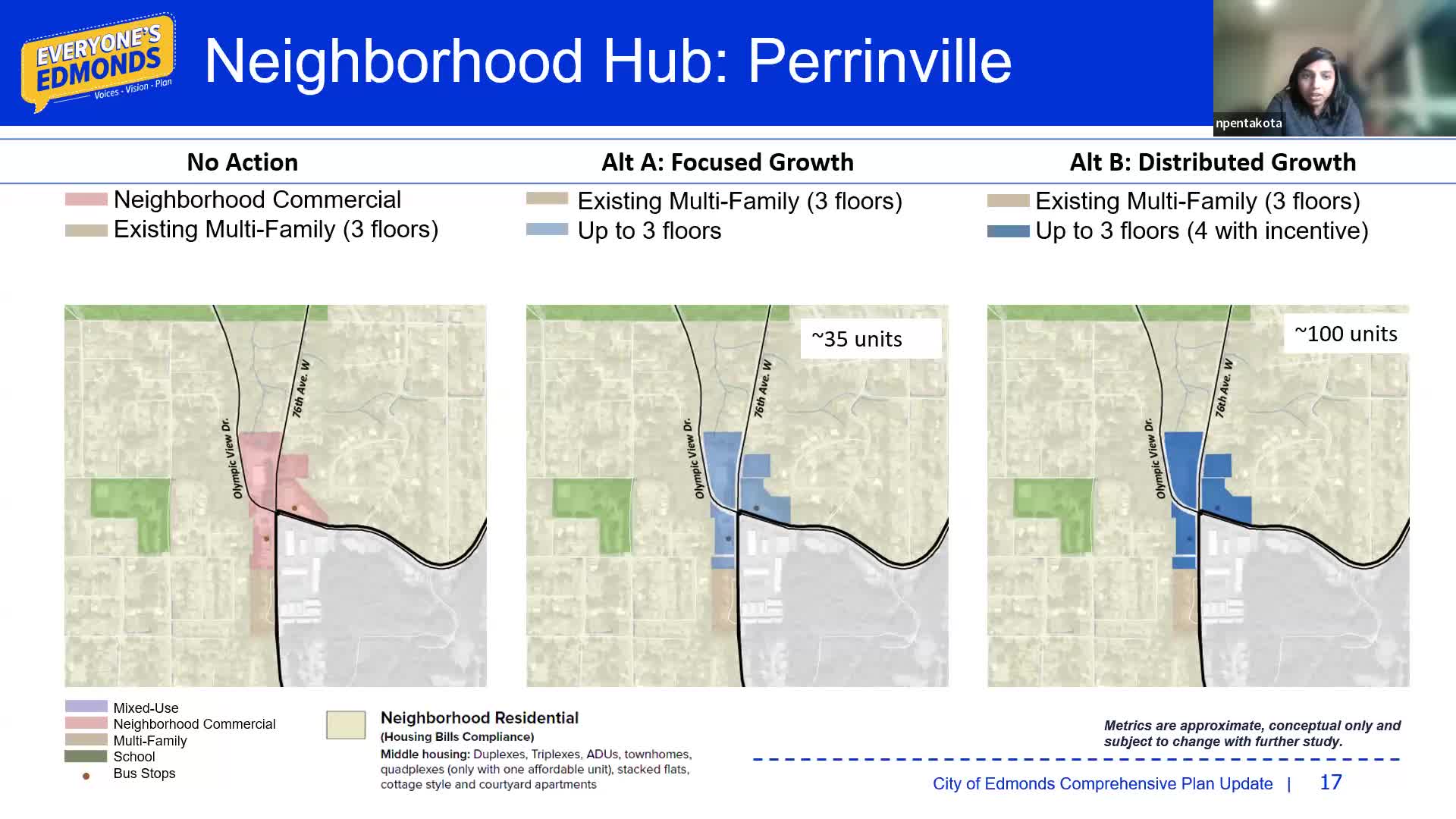Housing Hub Plan Sparks Controversy Over Flooding and Density
October 23, 2024 | Edmonds, Snohomish County, Washington
This article was created by AI summarizing key points discussed. AI makes mistakes, so for full details and context, please refer to the video of the full meeting. Please report any errors so we can fix them. Report an error »

In a recent government meeting, officials discussed two alternative development plans aimed at addressing housing needs while considering community feedback and environmental concerns. The proposals focus on the establishment of neighborhood hubs and centers, with significant implications for local housing capacity and urban planning.
Alternative A maintains the existing neighborhood commercial area, allowing for three floors of development, resulting in a total of 80 housing units. In contrast, Alternative B expands the area and introduces a bonus floor incentive, increasing the total housing units to 350. This alternative also addresses community concerns regarding flooding by proposing updated guidelines to mitigate stormwater impacts, suggesting that retaining the neighborhood hub could provide flexibility in managing building heights elsewhere.
Specific areas were highlighted in the discussion, including South Ballinger and West Edmonds Way, which are only included in Alternative B. South Ballinger would allow for 70 units, while West Edmonds Way would permit 35 units, both with a maximum height of three floors. Additionally, the Maplewood area, which includes a church parcel, could contribute 200 housing units under Alternative B, although the church's capacity cannot be counted towards overall growth targets.
The meeting also touched on the potential for trade-offs in development capacity, with officials considering how increased capacity in centers and hubs might allow for adjustments in other areas. The discussion emphasized the importance of balancing housing development with community needs and environmental considerations, as officials prepare to refine the proposals based on public input and further analysis.
Alternative A maintains the existing neighborhood commercial area, allowing for three floors of development, resulting in a total of 80 housing units. In contrast, Alternative B expands the area and introduces a bonus floor incentive, increasing the total housing units to 350. This alternative also addresses community concerns regarding flooding by proposing updated guidelines to mitigate stormwater impacts, suggesting that retaining the neighborhood hub could provide flexibility in managing building heights elsewhere.
Specific areas were highlighted in the discussion, including South Ballinger and West Edmonds Way, which are only included in Alternative B. South Ballinger would allow for 70 units, while West Edmonds Way would permit 35 units, both with a maximum height of three floors. Additionally, the Maplewood area, which includes a church parcel, could contribute 200 housing units under Alternative B, although the church's capacity cannot be counted towards overall growth targets.
The meeting also touched on the potential for trade-offs in development capacity, with officials considering how increased capacity in centers and hubs might allow for adjustments in other areas. The discussion emphasized the importance of balancing housing development with community needs and environmental considerations, as officials prepare to refine the proposals based on public input and further analysis.
View full meeting
This article is based on a recent meeting—watch the full video and explore the complete transcript for deeper insights into the discussion.
View full meeting
